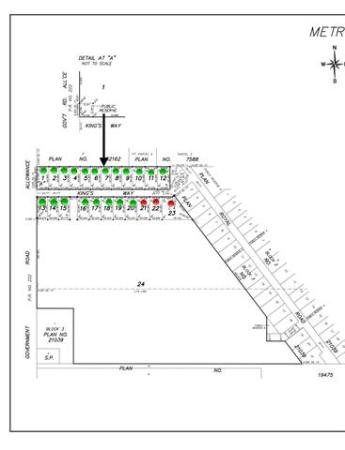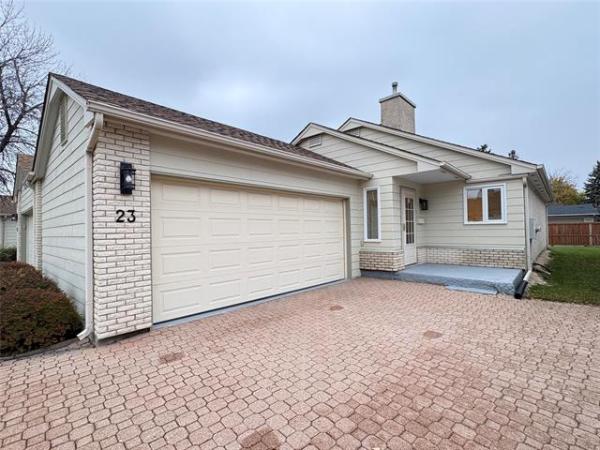Question: Looking to pick your brain, as I cannot find any answers on a foundation issue we are experiencing. We recently found a bit of black mould in our basement. So, we decided to pull off a bit of the wall to inspect. We discovered that we had spalling, almost the full length of the wall, but the spalling is only happening inside above ground level. It runs about two to three feet from ground level up to about where our deck is attached to our house. Would you have any idea how the spalling could be happening in that specific area? Could the deck maybe have something to do with the cause? Thank you for your time and hope to hear from you. D. Monette
Answer: Surface spalling on the inside of a foundation wall is due to moisture, which may be within the concrete or wetting the deteriorated surface. The location of yours certainly indicates damage from excessive condensation and frost formation and may be minimized by better air sealing of the insulated wall inside the foundation.
To address your questions in reverse order, the deck does not likely have anything to do with the deteriorated foundation wall, except maybe a minor issue. If the deck is on the south or west side of the home it may be blocking direct sunlight from hitting the foundation wall above grade. The heat and drying properties of the rays of the sun may help, somewhat, by warming the foundation wall in the winter and improving evaporation, but not likely enough to stop the damage. Other than this factor, there may be nothing that needs to be changed on the exterior of the house, unless the soil outside this area has eroded or shrunk. In that case, the soil should be built up under the deck to provide a slope away from the home and help provide some winter insulation properties for the concrete foundation.
When the surface of concrete flakes off, normally called spalling, it is likely due to either an inherent defect in the concrete or excessive moisture. If a horizontal slab of concrete spalls in the first few years after installation, especially a sidewalk, driveway or patio, it is likely due to a defect when it was poured. Weather that is too hot or too cold can cause the moisture in the concrete to evaporate too quickly, or freeze, preventing proper curing. This may not be noticed until a later date, when the surface flakes off and shows exposed aggregate. This may also be due to poor trowelling or finishing of the surface, which may also lead to spalling. Either way, the defect is likely due to environmental factors at the time of installation, and/or poor workmanship.
When the surface of a vertical slab of concrete spalls, like in your basement, it is also due to excessive moisture, but the source may be more difficult to pinpoint. If concrete remains wet for an extended period of time without adequate means of evaporation it can affect the surface. That phenomenon is often followed by deterioration to the smooth outside of the concrete slab, as the trapped moisture tries unsuccessfully to escape. This excessive water can literally push the thin top layer of the slab off, leaving an uneven surface exposed. If the foundation wall has not been properly damp-proofed at the exterior, this may be the result of the porous concrete absorbing excess water from the soil.
This is quite common in older homes, where the bitumen coating wears out over several decades and the weeping tiles become blocked and ineffective. The solution to that is exterior excavation and repairs, but the results are normally seen by leakage and deterioration below grade.
Because the spalling to your basement foundation walls is happening above grade, the source of the moisture is probably not from the soil. The moisture is likely coming from inside the living space.
If you have moderate to high relative humidity (RH) in your home, it takes a relatively small temperature drop for that moisture to condense. If the insulated walls over top of your foundation have gaps and are not well air-sealed, the moist air in your basement can leak into that wall cavity. Once inside the cavity, in the cold months, that relatively warm air will contact the cooler surface of the concrete foundation wall. If the wall is cold enough, condensation will occur, wetting the surface. In really cold winter weather, that condensation may freeze, leaving a layer of frost on the inside surface. This frost may thaw and re-freeze several times during a normal winter, causing the surface of the concrete to spall.
The other two factors that lead me to this conclusion are the mould growth and the location of the spalling. If there are gaps in the insulation, especially behind the studs or fibreglass batts, warm air will more easily enter the cavities and become stagnant. If there is dust, dirt or other cellulose-based materials on the foundation, mould will grow as condensation occurs. That is a sure sign of poor air sealing of these walls. The reason the top of the foundation is the only area spalling is because that portion of the foundation is above grade. It is not protected from the harsh winter environment by soil and snow cover, so will be much colder than the portion below. The colder the concrete, the more chance of condensation and frost formation. The solution to this issue is to remove the insulation, patch the spalling concrete, clean off any visible mould, and reinsulate with better materials that provide a proper air seal. You must ensure that the entire wall cavity is filled with insulation, ideally one that prevents air intrusion, such as spray-foam or high-density extruded polystyrene.
The damaged concrete surface of your foundation wall is undoubtedly due to excessive moisture on the inside from condensation and frost formation. Preventing that from happening, with properly installed insulation and air sealing of the wall cavity inside, will stop the surface deterioration and mould growth in the future.
Ari Marantz is the owner of Trained Eye Home Inspection Ltd. and a Registered Home Inspector (RHI)(cahpi.ca). Questions can be emailed to the address below. Ari can be reached at 204-291-5358 or check out his website at trainedeye.ca.
trainedeye@iname.com



